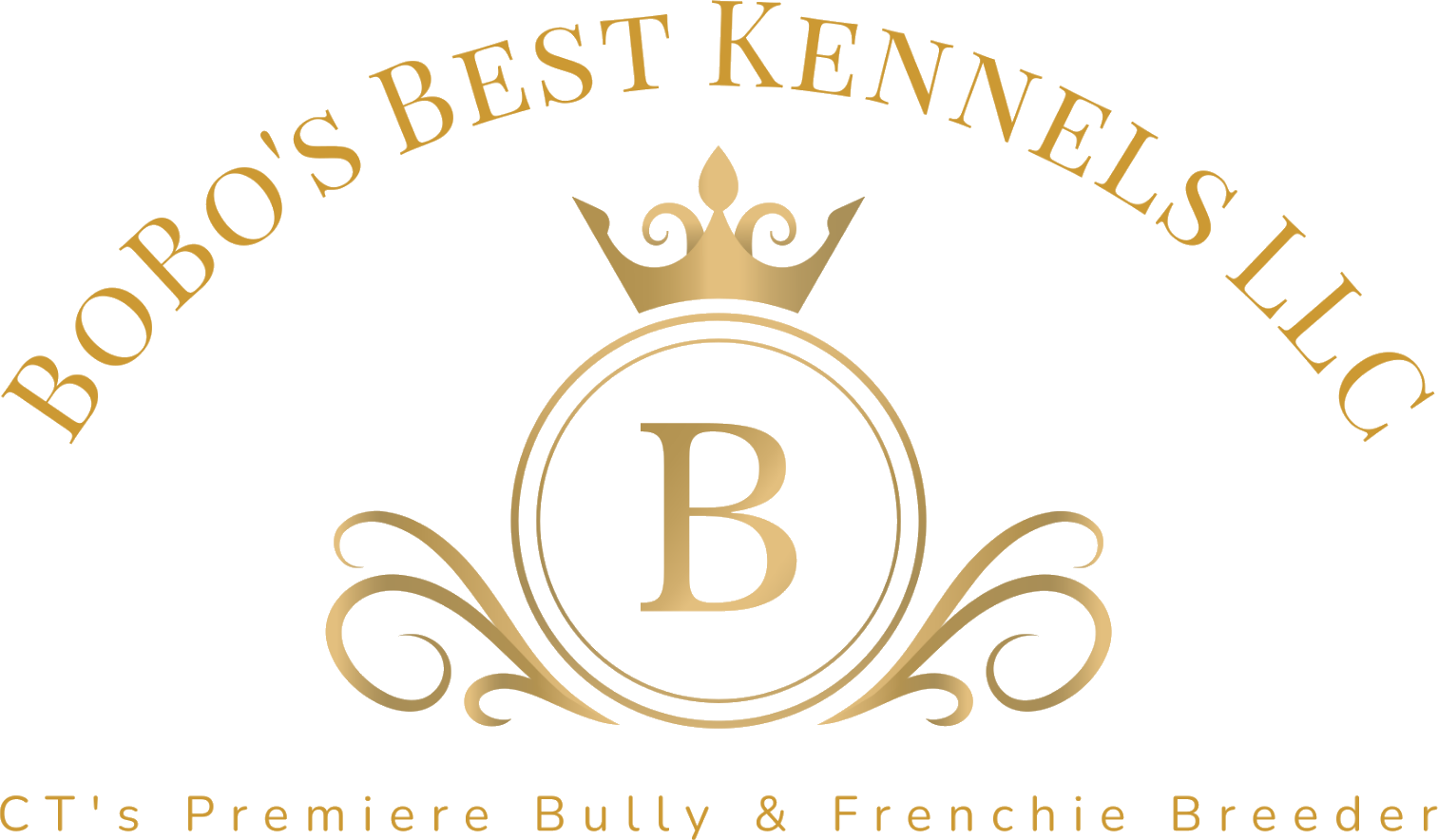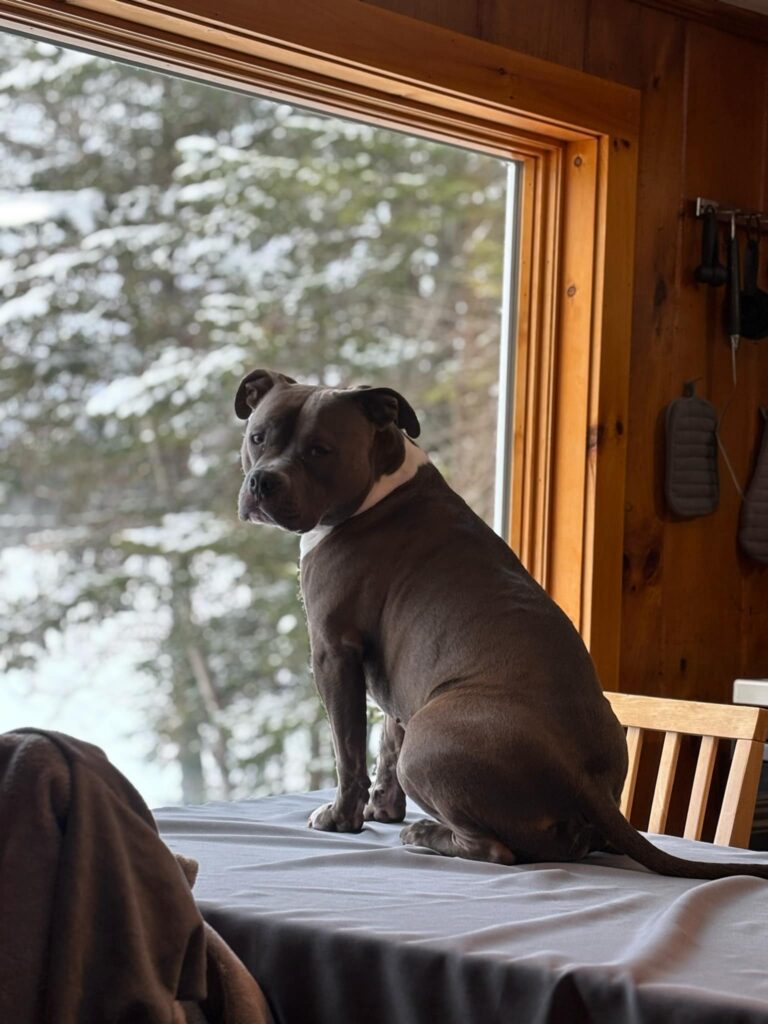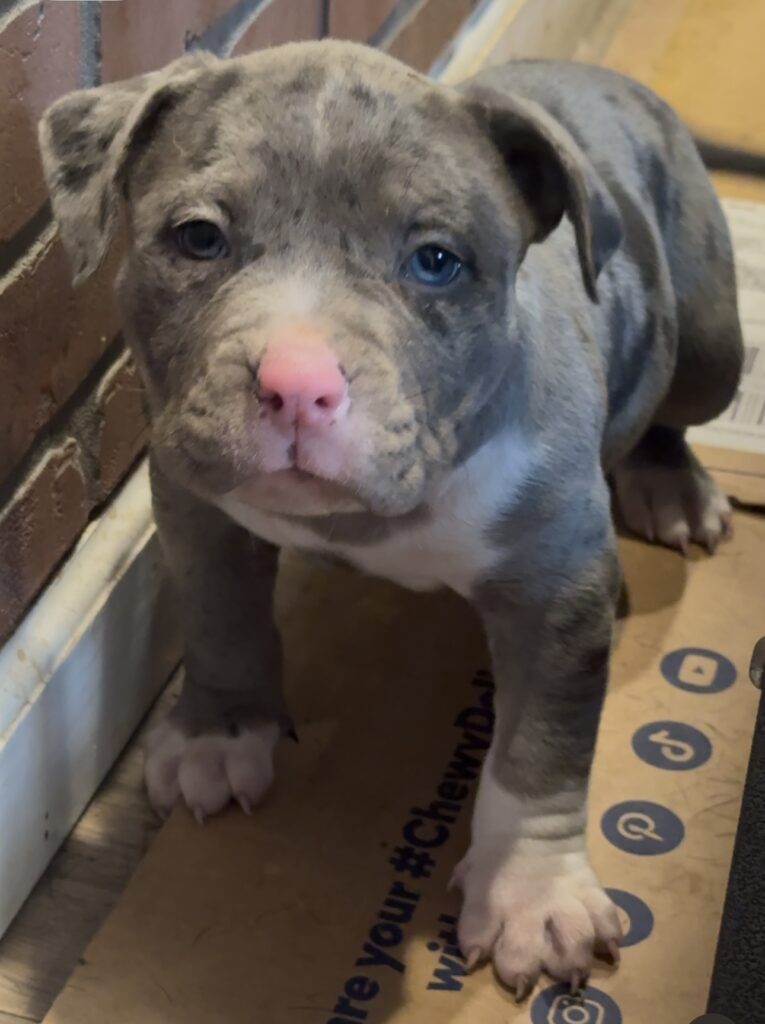The Fourth of July is a beloved American holiday full of fun, food, and fireworks. But while
we enjoy the festivities, our canine companions often have a very different experience. The
loud booms, sudden flashes, unfamiliar guests, and open doors can turn a joyful day into a
dangerous ordeal for dogs of all ages.
At BoBo’s Best Kennels, we’ve helped raise and rehome hundreds of well-adjusted
American Bullies and French Bulldogs, and we’ve seen firsthand how the Fourth of July can
be a stressful event for pups and adult dogs alike. This guide will help you prepare in
advance, reduce anxiety, and keep your furry friend safe and comfortable.
Understanding Why Dogs Fear Fireworks
Fireworks trigger a dog’s natural fight-or-flight response. The unpredictable sounds and
lights can be terrifying because they don’t know where the danger is coming from.
Common Reactions Include:
• Hiding or cowering
• Shaking or trembling
• Whining or barking
• Attempting to escape or bolt
• Destructive chewing or digging
Some breeds, such as French Bulldogs, may become clingy or drool excessively, while
high-energy breeds like American Bullies may panic and try to break free.
Step 1: Prepare Early with Desensitization
High Search Query: “How to prepare my dog for fireworks”
Start weeks in advance by playing firework sounds at a low volume during feeding or
playtime, gradually increasing the volume over time. This technique, known as
desensitization, helps dogs get used to the noise in a safe and controlled environment.
Tip: Pair the sound with positive reinforcement like treats, belly rubs, or toys.
Step 2: Update Identification and Microchips
The Fourth of July sees a spike in lost pets. Make sure your dog’s collar tags are up-to-date
with your contact info. Even better, ensure they are microchipped and that the registry has
your current address and phone number.
High Search Query: “Do microchips help find lost dogs?”
Yes, microchips dramatically increase the chances of reunion if your dog escapes.
Step 3: Create a Safe Indoor Space
Set up a calm, cozy, and secure space where your dog can retreat during fireworks. A crate
with a blanket over it, soft bedding, and familiar toys works great. Consider leaving a fan,
TV, or white noise machine running to drown out external booms.
For Puppies: Include teething toys or a frozen treat to distract and soothe them.
For Adult Dogs: Consider anxiety wraps like ThunderShirts, or talk to your vet about natural
calming aids.
Step 4: Tire Them Out Early
Exercise is one of the best ways to reduce anxiety. Plan a long walk or active play session
earlier in the day to burn off extra energy. A tired dog is more likely to sleep through the
evening chaos.
High Search Query: “How much exercise does my dog need before fireworks?”
Answer: At least 30 minutes to 1 hour depending on the breed and age.
Step 5: Plan for Potty Time
Before fireworks start, make sure your dog has gone to the bathroom. Many dogs are too
scared to go outside once the fireworks begin.
Pro Tip: Use a leash even in fenced yards during the holiday—a scared dog can become a
great escape artist.
Step 6: Secure Doors, Gates, and Windows
Ensure all exits are locked and secure. Close windows and curtains to reduce noise and
flashing lights. If you’re hosting guests, remind them not to leave doors open.
High Search Query: “How to keep my dog from escaping on July 4”
Answer: Supervise at all times, use baby gates or crates, and assign one family member to
“dog duty.”
Step 7: Avoid Bringing Your Dog to Fireworks Shows
As tempting as it may be to bring your pup along, fireworks shows are overwhelming for
even the most confident dogs. It’s safer and kinder to leave them at home in a controlled
space.
High Search Query: “Can dogs go to fireworks?”
Answer: Not recommended. Even calm dogs can panic in large crowds with loud noises.
Step 8: Consider Calming Aids
For dogs with a history of severe anxiety, consult your vet about calming supplements or
prescription anti-anxiety meds. Other options include:
• CBD oil for dogs (vet-approved brands only)
• L-theanine calming chews
• Pheromone diffusers (like Adaptil)
Important: Never give human medication to dogs unless prescribed by a vet.
Step 9: Watch What They Eat
Parties often come with dropped food, open trash, and curious noses. Keep alcohol,
chocolate, grapes, onions, and fatty meats away from your dog. Always monitor BBQ areas
and food scraps.
For Puppies: Be especially cautious—they explore with their mouths.
High Search Query: “What July 4 foods are dangerous for dogs?”
Answer: Chocolate, bones, alcohol, onions, garlic, grapes, fatty meats.
Step 10: Travel Smart
If you’re heading out of town with your dog, pack their essentials: food, meds, ID tags,
vaccination records, crate, leash, and familiar toys. Keep them buckled in a car-safe
harness or crate while driving.
High Search Query: “How to travel safely with my dog”
Answer: Secure them in the car, bring familiar items, and plan breaks.
After the Fireworks: Recovery Tips
Some dogs may still be nervous the next day. Keep routines calm and provide reassurance.
If your dog had a particularly rough time, note it down and talk to your vet about long-term
anxiety strategies.
High Search Query: “My dog is still anxious after fireworks”
Answer: Maintain calm routines, try calming products, and build confidence with positive
training.
Final Thoughts from BoBo’s Best Kennels
The Fourth of July is a time of celebration, but for our four-legged friends, it can be
downright frightening. With a little preparation, you can make this holiday safer and less
stressful for your pup. Whether you’re caring for a playful new puppy or a seasoned adult
dog, we hope these tips help keep tails wagging well past the fireworks show.
From all of us at BoBo’s Best Kennels, stay safe and give your dog an extra cuddle from us!
Want more dog care tips? Visit www.bobosbestkennels.com or follow us on Instagram
and Facebook for updates, training advice, and puppy love.



